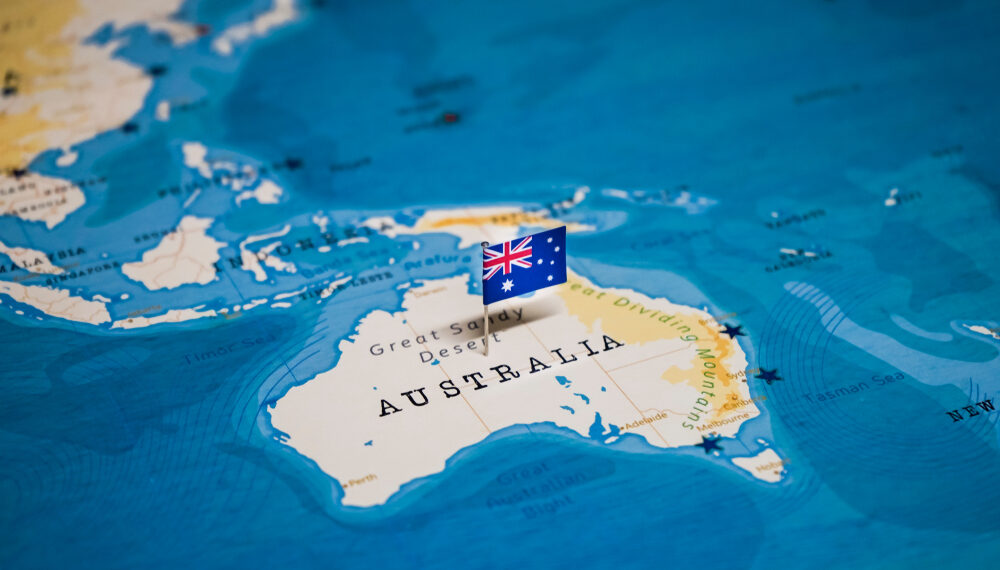
Summary
- Australia has been broadly receptive to the crypto sector, as evidenced by the authorities’ attitude the relatively large numbers of its citizens who hold crypto investments.
- Australia has some regulatory mechanisms in place already, and is pursuing wide-ranging use cases to test and ultimately create a robust regulatory environment that will allow crypto to thrive while also ensuring better user safety and protection.
- A change of government in 2022 has, however, slowed progress on steps towards further legislation, with some arguing that Australia will lose out if it doesn’t move more swiftly.
Crypto adoption
How is crypto used in Australia?
It is legal to trade, receive, spend and store cryptocurrencies in Australia, and crypto exchanges were legalized in 2017. Cryptocurrencies are an accepted means of payment, though there is no obligation for merchants to accept them.
It is estimated that more than one million Australians (approximately 5% of the population) own at least one cryptocurrency. Cryptocurrencies are most popular with the under 35s (10% of this age group hold cryptocurrencies), and approximately two-thirds of investors are men. Older Australians (over-50s) typically hold larger investments, averaging $56,200, while at the other end of the scale, the average crypto investment holding for 18-24 year-olds is approximately $2,600.
Many Australians hold cryptocurrencies as an investment. As a result, difficulties in the market during 2022 have spooked some Australian investors, prompting a drop off in interest while also spurring the authorities to consider tighter regulation. Alongside this, debanking is becoming an increasing issue, with four of the country’s banks blocking some crypto payments to reduce losses from scams.
That said, research released in September 2022 suggested that within the coming 12 months one million Australians planned to buy cryptocurrencies for the first time, highlighting an enduring appeal, despite the risks.
Crypto regulation
What has been the government’s reaction to crypto?
Historically, the government has taken a relatively gentle approach to crypto asset regulation. Turbulence in the crypto sector and a rise in crypto scams in the country – it is asserted that one in three of the dollars that Australians lose in scams has some link with crypto – has created a change of approach.
To date, the most prominent pieces of legislation relating to the sector are financial services, and anti-money laundering and counter terrorism financing (AML/CTF) regimes, but further legislation is expected, possibly during 2024.
Timeline of key legislation
Cryptocurrencies were legalized in Australia in 2017.
In 2018, crypto legislation incorporated AML and CTF measures, and the Financing Act 2006 was updated to include digital currencies in these two regimes.
Under regulation set by the Australian Securities and Investments Commission (ASIC), crypto assets are part of exchange-traded products (ETPs) and other investment products. As investments, cryptocurrencies are therefore subject to capital gains tax (CGT).
In October 2021, the Senate Select Committee on Financial Technology and Regulatory Technology issued a report into regulating crypto assets, offering 12 recommendations. Among these was a review of the viability of a retail central bank digital currency.
In August 2022, the government announced it would be initiating consultations with the industry, investors and other stakeholders to begin the process of drafting a regulatory framework for the sector.
In December 2022, the government announced plans aimed at improving industry safety. It revealed that it was looking to create a framework that would license and regulate crypto service providers in 2023. This has yet to take place.
In February 2023, the government through the treasury began a token mapping exercise, to help explain how various crypto assets could fit into existing regulatory frameworks.
In March, opposition senator and crypto sector support, Andrew Bragg, introduced the Digital Assets (Market Regulation) Bill, at the center of which was the introduction of robust disclosure norms for banks. This would be designed to help them handle the introduction of China’s digital yuan in Australia. The proposed legislation also sought to implement licensing systems for crypto exchanges, custody services and stablecoin issuers.
Also in March, the country’s taxation office implemented a data-matching program, with the express purpose of monitoring crypto transactions to ensure compliance with taxation laws.
In September 2023, the Senate Economics Legislation Committee rejected the Digital Assets (Market Regulation) Bill. Reportedly reflecting the current government’s views, the committee called for greater consultation with the crypto sector before implementing further digital assets regulation. In addition, the committee suggested that the proposed bill was inconsistent with international frameworks, creating possible concerns about possible discrepancies.
In October 2023, the Treasury released for consultation its long-awaited regulatory framework for crypto regulation – Regulating digital asset platforms. The highlights included:
- Extending the Australian Financial Services (AFS) license (the country’s umbrella regime for financial products and services) to crypto service providers. This would treat them the same as fund managers and securities brokers, and define crypto as a financial product.
- Custody of customer assets as a ‘regulatory anchor’ – the paper defines a new type of financial product, the ‘digital asset facility’, which would include all entities that hold customer assets. This becomes a digital asset platform when coupled with services like trading. In a move designed to mitigate harm from risky activity and align with the international community, digital asset platforms holding more than A$5 million in customer assets would require an AFS license.
- Similar risk, similar activity, same outcome. The proposal doesn’t use the word ‘same’, but rather ‘similar’, and includes crypto-specific requirements to mitigate risks that are unique to crypto. It adds obligations related to trading, staking, tokenization and fundraising activities.
Use cases in Australia’s crypto space
The Digital Finance Cooperative Research Centre (DFCRC) is a 10-year, $180 million research program. It receives funding from the government, universities and industry partners. It has a mission to develop the opportunities arising from the digitization of assets, and as part of its work, it is conducting 16 use cases.
It has four research streams, which consider:
- Dynamic registers for instant exchange – this looks at ways to digitize the registry to help transform financial markets.
- Advanced securitization – this seeks to make things into instantly tradable digitized assets.
- Distributed trading – this explores ways to develop next generation technology and finance analytics to support customized marketplaces.
- RegTech with algorithmic real-time enforcement – this is helping to build the rules and regulations required as part of the transfer.
As part of its use case development, in May 2023, the country made its first foreign exchange transaction using an Australian digital dollar – eAUD – in a trade for a US dollar stablecoin, as part of a pilot into the potential for a central bank digital currency. This was part of explorations into the use of a digital dollar in tokenized FX settlements.
The other use cases are investigating the following areas: offline payments; nature-based asset trading; SuperStream payments; corporate bond settlements; GST automation; CBDC custodial models; livestock auction; high-quality liquid assets securities trading; interoperable CBDC for trusted Web3 commerce; funds custody; construction payments; tokenized bills; and CNDC distribution.
Outlook
Progress towards greater regulatory and legal clarity is being made and has been given a sizeable boost with the release of the Regulating digital asset platforms consultation document. Up to this point, the government of Prime Minister Anthony Albanese, who came to power in May 2022, has appeared less interested and supportive of crypto than its predecessor.
Regulation had been expected during 2023 but has not been forthcoming. That said, the consultation document underscores the expectation that it is only a matter of time before measures will be introduced to regulate exchanges and create custody arrangements as part of moves to better safeguard investors and their funds.
The authorities are right to be cautious and the consultation document reflects a desire to meld existing regulation with international standards while also understanding that the crypto sector has its own unique characteristics.
As with every market that is grappling with the swift rise of crypto, the balance that needs to be found is to properly understand the market and establish regulations without crushing innovation.

























